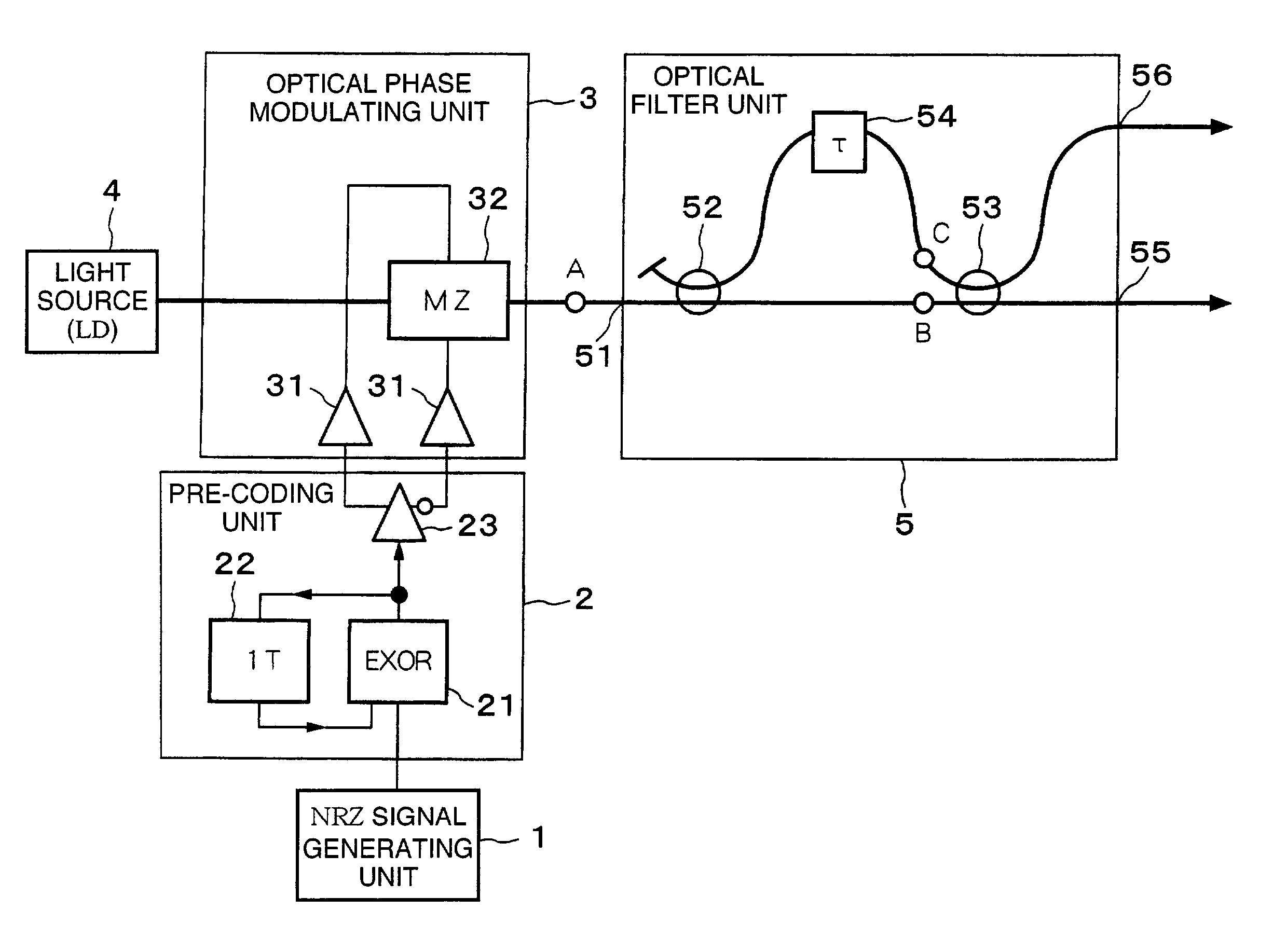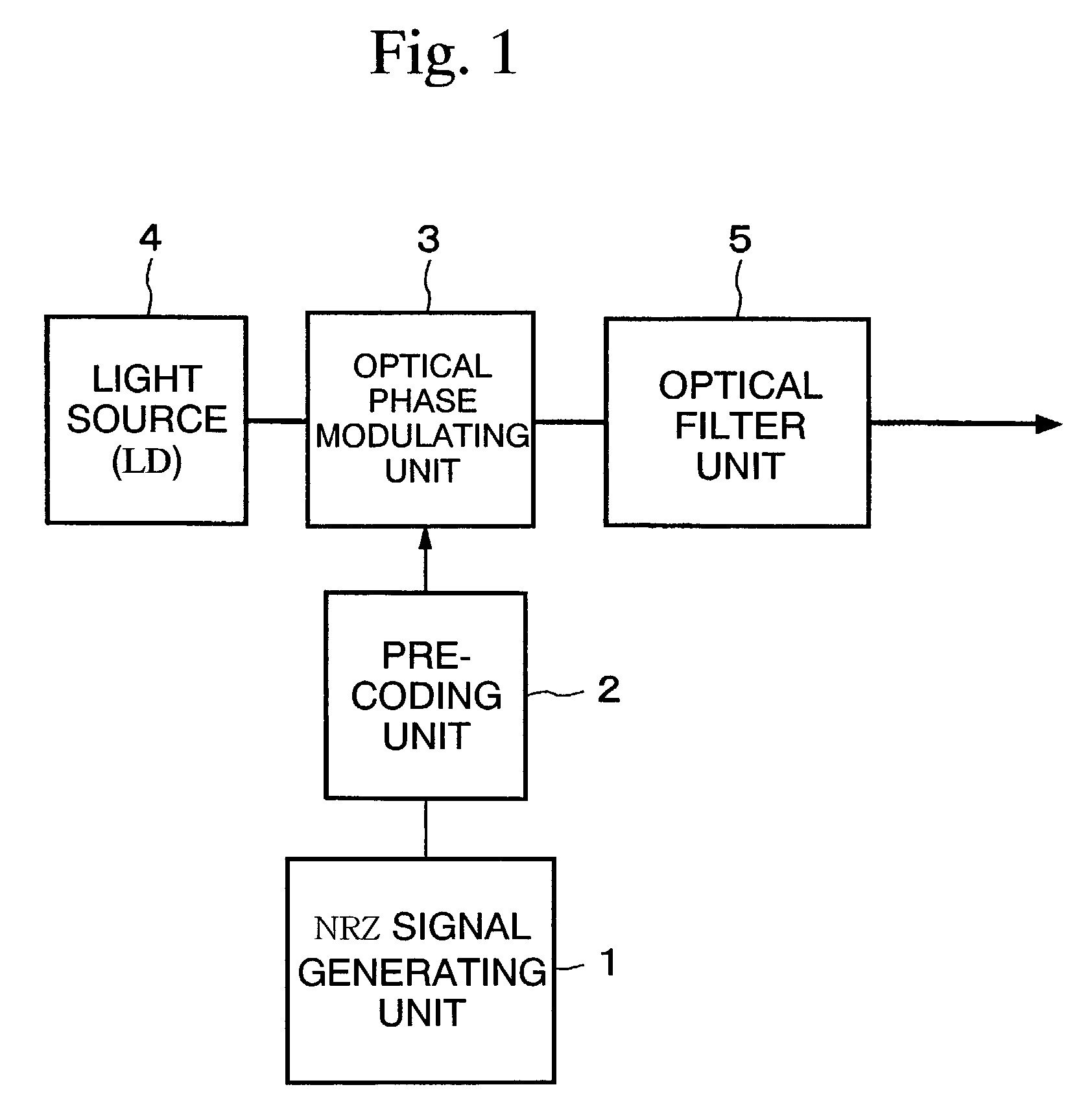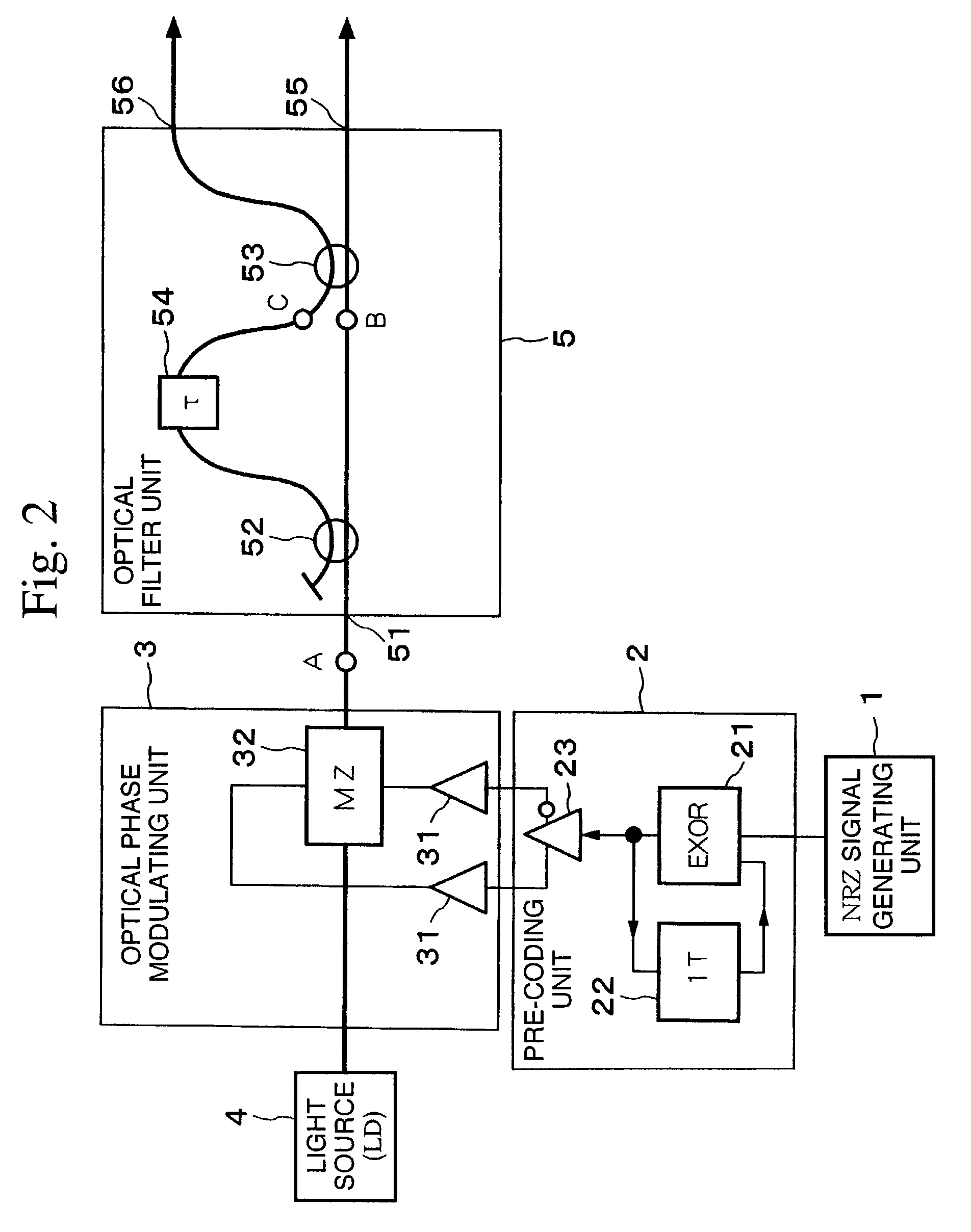Optical transmitter and optical transmission system
a transmission system and optical transmitter technology, applied in the field of optical transmitters and optical transmission systems, can solve the problems of system performance degradation, optical output power of the modulating unit decreases, and insertion loss in the modulating unit increases, so as to facilitate the enhancement of high-speed operation the increase of the line rate of the transmission system is easy to realize, and the loss of the optical modulator is decreased.
- Summary
- Abstract
- Description
- Claims
- Application Information
AI Technical Summary
Benefits of technology
Problems solved by technology
Method used
Image
Examples
Embodiment Construction
[0090]The following embodiments do not restrict the interpretation of the claims relating to the present invention, and the combination of all the features explained in the embodiments is not always indispensable means of solving the problem.
[0091]FIG. 1 is a block diagram showing an embodiment of the optical transmitter according to the present invention. In FIG. 1, the binary NRZ electrical signal output from the NRZ signal generating unit 1 is input into the pre-coding unit 2. The pre-coding unit 2 carries out signal processing so that the optical signal output from the optical transmitter matches the input NRZ signal. The differential pre-coded NRZ signal generated by the pre-coding unit 2 is amplified as necessary, and input into the optical phase modulating unit 3.
[0092]The single longitudinal mode CW optical signal emitted by the light source 4 (LD: a laser diode) is appropriately phase modulated by the optical phase modulating unit 3, and subsequently input into the optical ...
PUM
 Login to View More
Login to View More Abstract
Description
Claims
Application Information
 Login to View More
Login to View More - R&D
- Intellectual Property
- Life Sciences
- Materials
- Tech Scout
- Unparalleled Data Quality
- Higher Quality Content
- 60% Fewer Hallucinations
Browse by: Latest US Patents, China's latest patents, Technical Efficacy Thesaurus, Application Domain, Technology Topic, Popular Technical Reports.
© 2025 PatSnap. All rights reserved.Legal|Privacy policy|Modern Slavery Act Transparency Statement|Sitemap|About US| Contact US: help@patsnap.com



